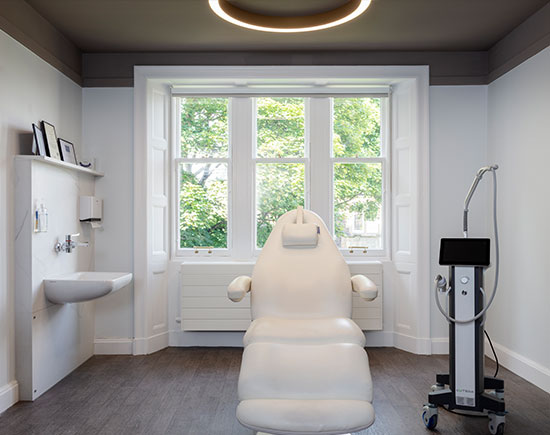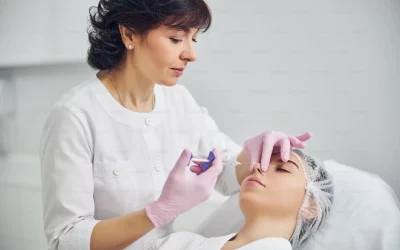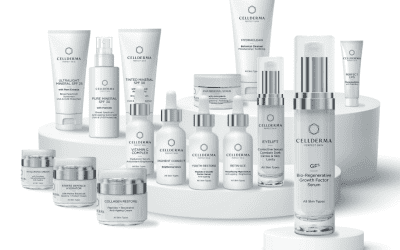Hyperpigmentation: How Do You Treat Melasma?

Hyperpigmentation, a common skin condition characterised by darkened patches on the skin, affects millions worldwide. Melasma often looks like a group of freckles grouped into one darkened patch, but it can take on many different forms.
This condition, often linked to hormonal changes and sun exposure, can be both a concern and a frustration for those affected. Whilst melasma can be a persistent concern, there are plenty of ways to treat melasma and minimise the potential of it returning.
Understanding melasma
Melasma is a form of hyperpigmentation that typically appears as brown or grey-brown patches on the face, especially on the forehead, cheeks, bridge of the nose, chin, and above the upper lip. It can also occur on other parts of the body prone to excessive sun exposure, such as the forearms and neck. Melasma is more common in women, particularly during pregnancy (often referred to as the “mask of pregnancy”), but it can affect men as well.
Causes and risk factors
The exact cause of melasma is still under investigation, but several factors are known to contribute to its development. These include genetic predisposition, hormonal changes (such as those occurring during pregnancy, with contraception use or hormone therapy), and sun exposure, which increases melanin production in the skin.
In addition, skin irritation can exacerbate melasma, making gentle skin care and protection crucial.
Treatment options at our Dr. Nestor clinics
Treating melasma can be challenging due to its tendency to recur. A multi-faceted approach often yields the best results, combining professional hyperpigmentation treatments with at-home care. In our clinic, we offer a range of options tailored to individual needs and skin types.
Topical treatments
Topical creams containing ingredients like hydroquinone, tretinoin, corticosteroids, azelaic acid, glycolic acid, or kojic acid can be effective in lightening dark patches. These treatments work by reducing melanin production or increasing the turnover of pigmented skin cells. They require a prescription and should be used under the guidance of a skincare professional to avoid irritation and other side effects.
Chemical peels
Chemical peels, utilising acids at various concentrations, can also be effective in treating melasma. These peels remove the outer layer of the skin, promoting new, lighter skin to replace it. The procedure should be performed by a qualified professional at a clinic to ensure safety and effectiveness.
Light therapy
Light treatment for melasma, including procedures like Intense Pulsed Light (IPL) therapy and Dermalux LED Light Therapy, represents a promising avenue for those seeking to alleviate the appearance of this complex skin condition. These advanced dermatological techniques target the melanin pigment within the skin, aiming to lighten the dark patches that are characteristic of melasma.
Microneedling
Microneedling, a procedure that involves creating tiny punctures in the skin to stimulate collagen production and skin renewal, can also improve the appearance of melasma. It’s often combined with topical treatments for enhanced penetration and effectiveness.
Preventive measures and skin care
Prevention and maintenance are key in managing melasma. Daily use of broad-spectrum sunscreen with an SPF of 30 or higher, wearing protective clothing, and seeking shade can help prevent the worsening of melasma. Gentle skin care products and avoiding known triggers, like certain skincare ingredients or hormonal medications, can also be beneficial.
A combination of treatments: BOTOX and fillers
While BOTOX and fillers are primarily known for their anti-ageing properties, their role in treating melasma is more indirect. BOTOX, a neurotoxin that relaxes muscles to smooth wrinkles and fillers, adding volume to areas like the lips and cheeks, do not directly treat melasma.
However, in some cases, strategically placed BOTOX or fillers can improve the overall appearance of the skin and complement melasma treatment by creating a more uniform skin texture and reducing the appearance of fine lines and wrinkles that might accentuate pigmented areas.
However, it’s important to consult with one of our professionals first to see if BOTOX is the right treatment for your concerns.
Melasma treatment with Dr. Nestor
Melasma can be a persistent and challenging skin condition, but with the right treatment plan, significant improvement is possible. At Dr. Nestor’s Clinic, we understand the complexities of melasma and offer a personalised approach to care. From cutting-edge light treatments designed to lighten hyperpigmented areas to topical therapies and chemical peels, our goal is to restore your skin’s natural glow and boost your confidence.
In addition to melasma treatments, our clinic provides a variety of beauty enhancements, including BOTOX (subject to consultation and whether this is an appropriate treatment for your concerns) and dermal fillers, to complement your skin care regimen and enhance your overall appearance. Our team is dedicated to providing you with the highest quality of care in a warm and welcoming environment.
If you’re struggling with melasma and looking for effective treatment options, let us help you navigate your journey to clearer, more radiant skin. Contact us today to book an appointment and take the first step towards revitalising your complexion.























